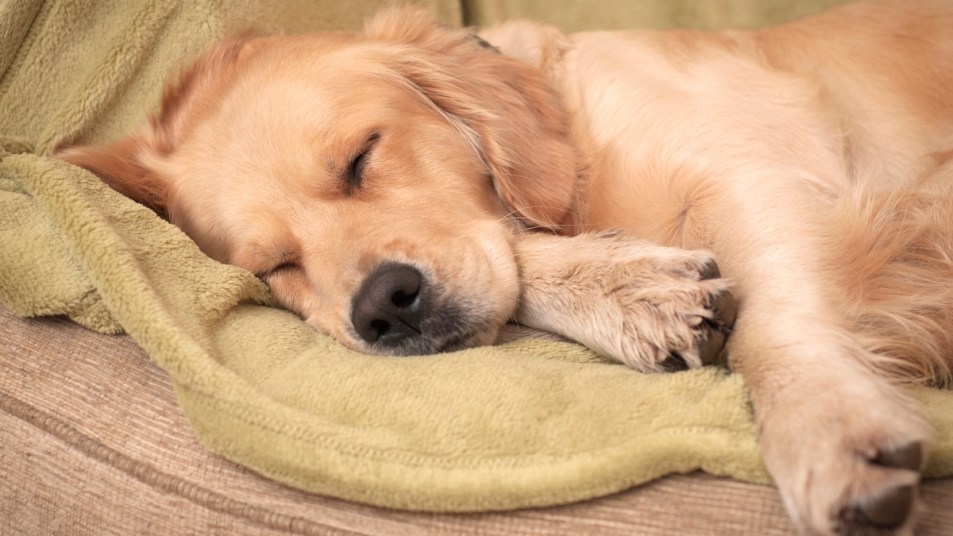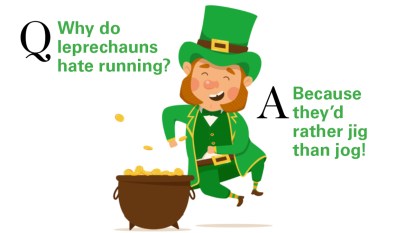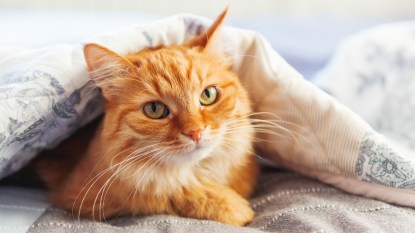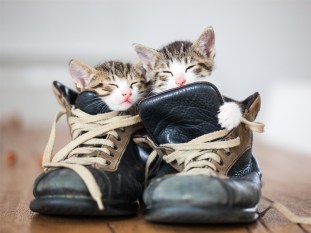Do Dogs Dream? Vets Reveal What All That Twitching in Their Sleep Really Means
Plus, what to do if you think your pup is having a nightmare

It always gives us the warm fuzzies when our dog curls up beside us for a snooze. They look so peaceful … until they start to twitch or even whimper. We always like to think that means Fido is having a great adventure in dreamland. But do dogs actually dream? After all, they often spend a lot of time snoozing. And what’s really going on with a dog twitching in sleep? Here, experts weigh in on what’s dancing through your pup’s mind while they’re asleep.
The down low on dreams
For us humans, dreams can be pleasant, bizarre or frightening. They’ll often feel real and vivid, even when they’re absurd. So what are dreams, and why do we have them? They’re usually composed of the person’s thoughts in their waking life, blended with various worries, memories and experiences. Humans typically have three to six dreams a night but may forget many of them upon waking. These nighttime visions occur during rapid eye movement (REM) sleep, the deepest stage of sleep. (Click through for an expert’s analysis of common dream scenarios.)
Do dogs have dreams?
Research suggests that animals, including dogs, do dream. In a 2001 MIT study, researchers monitored the brain activity of rats in a maze, then monitored it again when the rats were asleep. The results suggested that, in the rats’ REM sleep, their memory centers were active, and their brains were creating the same patterns they did when they were going through the maze. This led researchers to believe the rats were dreaming about the maze, just like humans dream about their waking experiences. “The correlation was so close that the researchers found that as the animal dreamed, [it] could reconstruct where it would be in the maze if it were awake and whether the animal was dreaming of running or standing still,” said a report on the study.
Because dogs’ minds are more complex than those of rats, and because their sleep movements (like twitching) mimic activities they perform in their waking life, experts believe dogs also have robust dream lives. “Watching a dog sleep in recovery from anesthesia after an invasive surgery shows the same sleep pattern as a human in recovery,” says veterinary surgeon Dr. Chinonyerem Ukweni.
The American Kennel Club notes that a dog tends to enter in REM sleep (just like humans), about 10-20 minutes after they fall asleep. And they’ve begun to dream if you can see their eyes moving behind their eyelids. “This is the point in the dream where it might feel very real to your dog,” says veterinarian Dr. Alex Crow.
As for the frequency of their dreams, it can differ from dog to dog. “It can happen that your dog might dream more often if they sleep a lot,” says Dr. Crow. But their age and breed can also play a factor; smaller dogs may dream more often, but their dreams are usually shorter. Larger dogs have longer, less frequent dreams. And middle-aged dogs dream less frequently than puppies and senior dogs, adds the American Kennel Club.
What dogs dream about when twitching in their sleep
Just like humans, dogs seem to dream about lived experiences. “This can include playing with other animals and being with their owners,” says Dr. Crow. Their twitching movements also provide a hint as to the content of their dreams. “Most experts agree dogs are dreaming of running and chasing when their legs move in unison,” says veterinarian Dr. Linda Simon. Your dog may also bark in her sleep or perform other strange — and sometimes humorous — actions.
The American Kennel Club suggests that your dog’s breed may also play a factor in their dream content; for instance, hunting dogs may track down small animals in their dreams. Your dog’s dreams are dependent on their habits, routines and personality.
What to do if your dog is having a nightmare
Because dogs can dream, they can also have nightmares. And just like dreams, nightmares seem to correspond to a dog’s lived experiences and fears, too. Psychology Today shared a story from a reader, Joseph, whose dog, Goober, hated baths, and seemed to experience nightmares about them. Joseph claimed that when his wife finished bathing Goober, the pup would run out of the bathroom and hide behind Joseph’s legs. One night, Goober was fitfully sleep-running, abruptly awoke and beelined to hide behind Joseph’s legs — indicating that he’d been having a nightmare about the bath.
Dr. Ukweni notes that she’s worked with adopted dogs from difficult or abusive situations that have violent nightmares — whimpering and even waking up barking. If you notice your dog growling aggressively, shaking, yelping or whimpering in their sleep, they may be having a nightmare.
While it’s tempting to wake your dog up and stop their nightmare, it’s better to leave them be, says Dr. Simon. “It’s best to never wake your dog when sleeping, even if you think they may be having a nightmare,” she cautions. “This is because they might be disoriented and there is a risk they could snap out of confusion.”
If, for some reason, you need your dog to wake up from a nightmare, Dr. Ukweni recommends calling their name from a distance to gently wake them instead of petting or poking them. That way, they can’t accidentally bite you. Because dogs are usually light sleepers, saying their name should be just as effective.
Dogs twitching — and more — in their sleep
If you’ve never seen a dog twitching in her sleep, it’s a cute sight to behold! Check out these videos of dogs who are doing more than counting sheep. Can you tell what they’re dreaming about based on their movements?
1. Peaceful sleep twitches
Sometimes, sleep twitching is peaceful and serene, indicating that the dreams are, too.
2. Dogs who are ‘chasing’ Z’s
Other times, dogs do more than twitching in their sleep — they also go on running adventures.
3. Happy Labrador
Whatever this sweet lab’s dreaming about, we know it’s good!
4. Talkative sleeping pup
She’s got a lot to say, and being asleep won’t stop her!
5. Sleep snacking
Eating and sleeping? Talk about multitasking.
Your dog adds a lot of joy to your daily life, and chances are, you add a lot of joy to theirs — even in their dreams. Treat your dog to a walk in the park or a nice round of fetch and see if they’re dreaming about it later.
Click through to learn more about quirky dog behaviors:
Why Do Dogs Lick Your Feet? They’re Showing You Respect — But That’s Not All, Say Vets
Why Dogs Chatter Their Teeth — Vets Reveal the Reasons And They’re Totally Relatable
Why Do Dogs Roll in Poop — The Cute Instinct Behind the Gross Behavior and How to Stop It
Dog Zoomies: Vets Explain What Makes Your Pup Go Absolutely Bonkers













